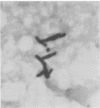Abstract
The efficiency of culture media was compared for the culture and subculture of very slowly growing acid-fast bacilli and spheroplast forms obtained from intestinal tissues of patients with Crohn's disease and ulcerative colitis and from controls without inflammatory bowel disease. Media were developed by modifying a nutrient broth medium based on veal infusion broth and yeast extract. We evaluated the effects of pH and the addition of Tween 80, Dubo oleic albumin complex, an extract from intestinal tissue from a patient with Crohn's disease, horse serum, sucrose, magnesium sulfate, ferrous ammonium sulfate, and sodium citrate. All media contained mycobactin J (2 micrograms/ml). We developed a medium (MG3) which was highly successful in promoting the growth of very fastidious organisms and promoted reversion of spheroplasts to acid-fast rods. MG3 contained veal infusion broth, 1% yeast extract, 10% horse serum, 0.3 M sucrose, 0.2% MgSO4, 0.1% ferrous ammonium sulfate, 0.1% sodium citrate, and 2 mg of mycobactin J per liter. We were able to obtain quantities of organisms sufficient for examination of the organisms by molecular techniques. Successful cultivation of all isolates and reversion of spheroplasts to acid-fast forms encourage further studies of the possibility of a complex association of mycobacteria and Crohn's disease.
Full text
PDF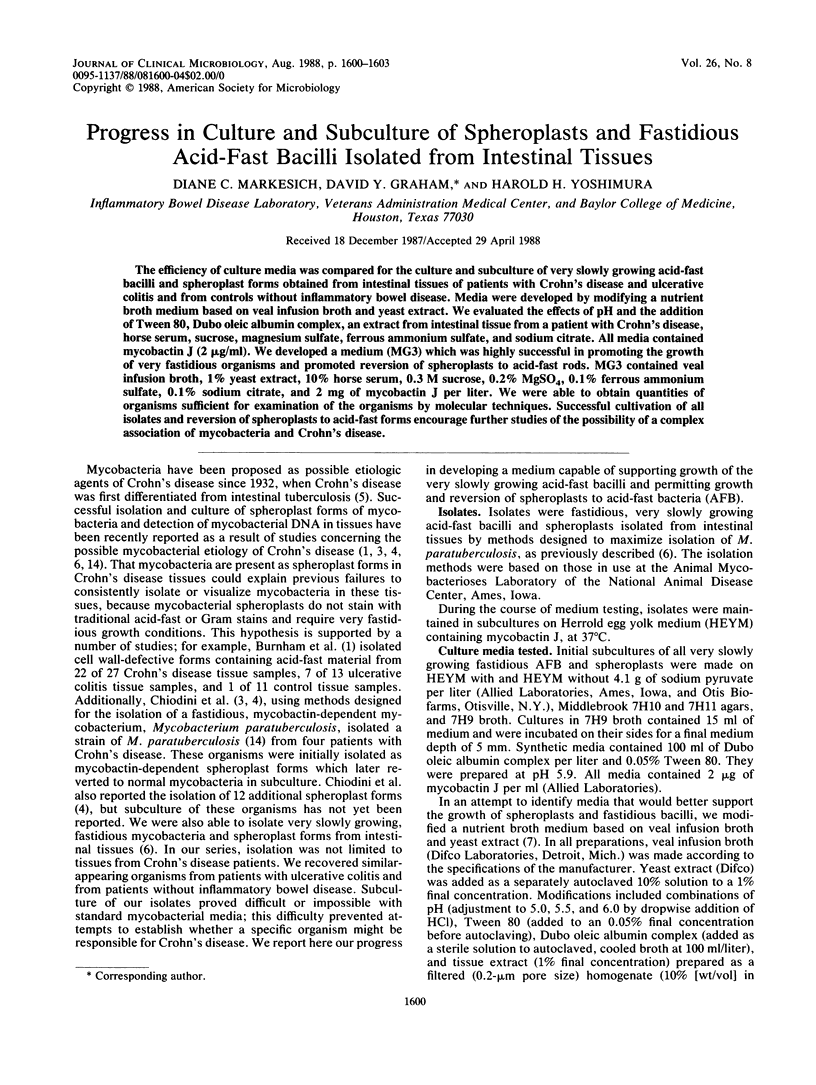
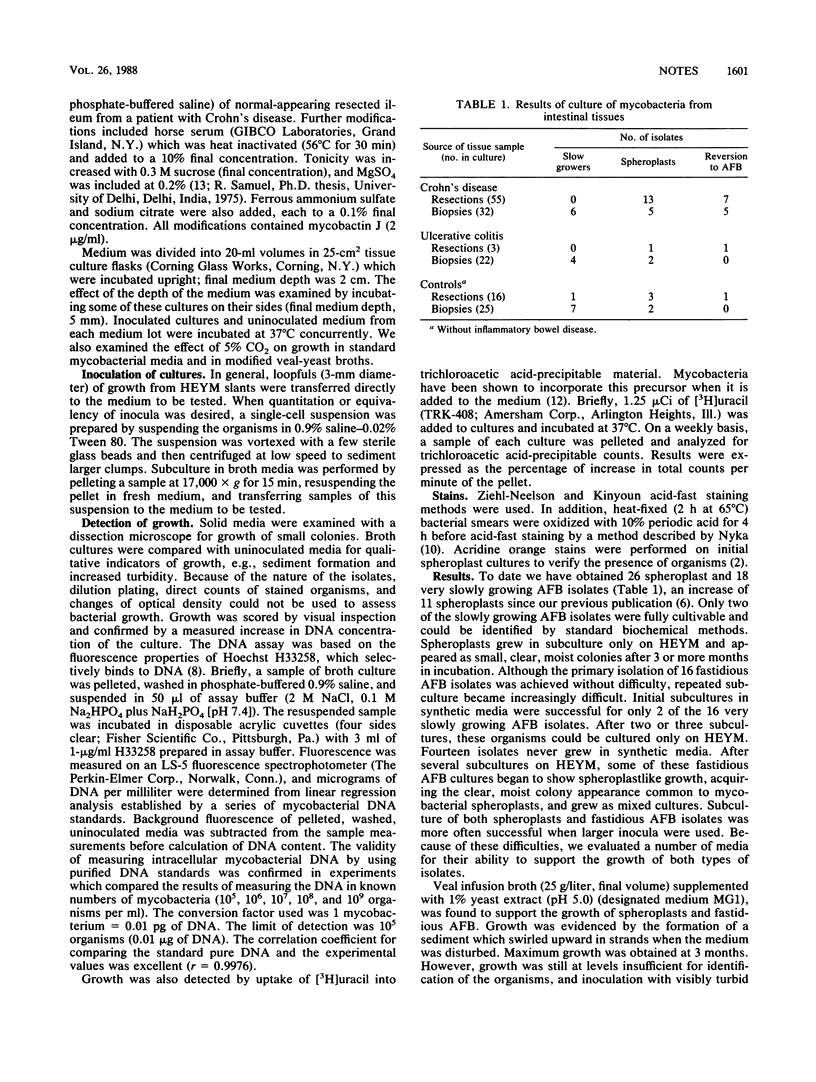
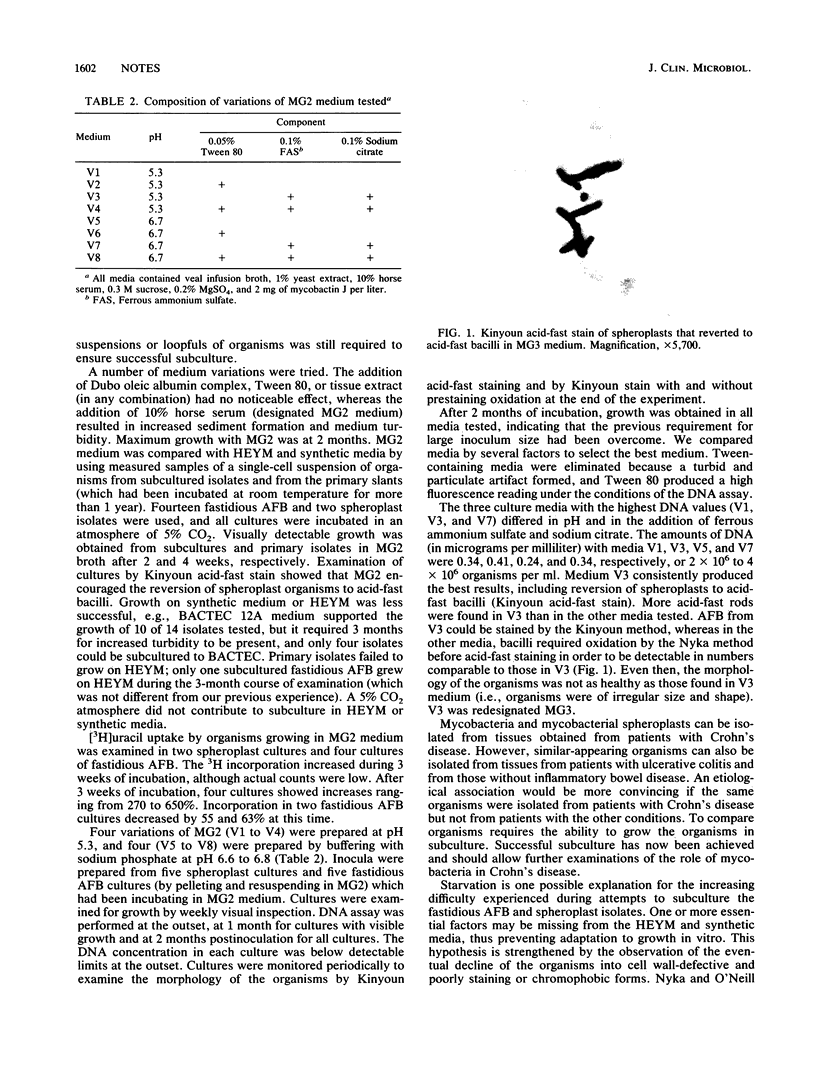
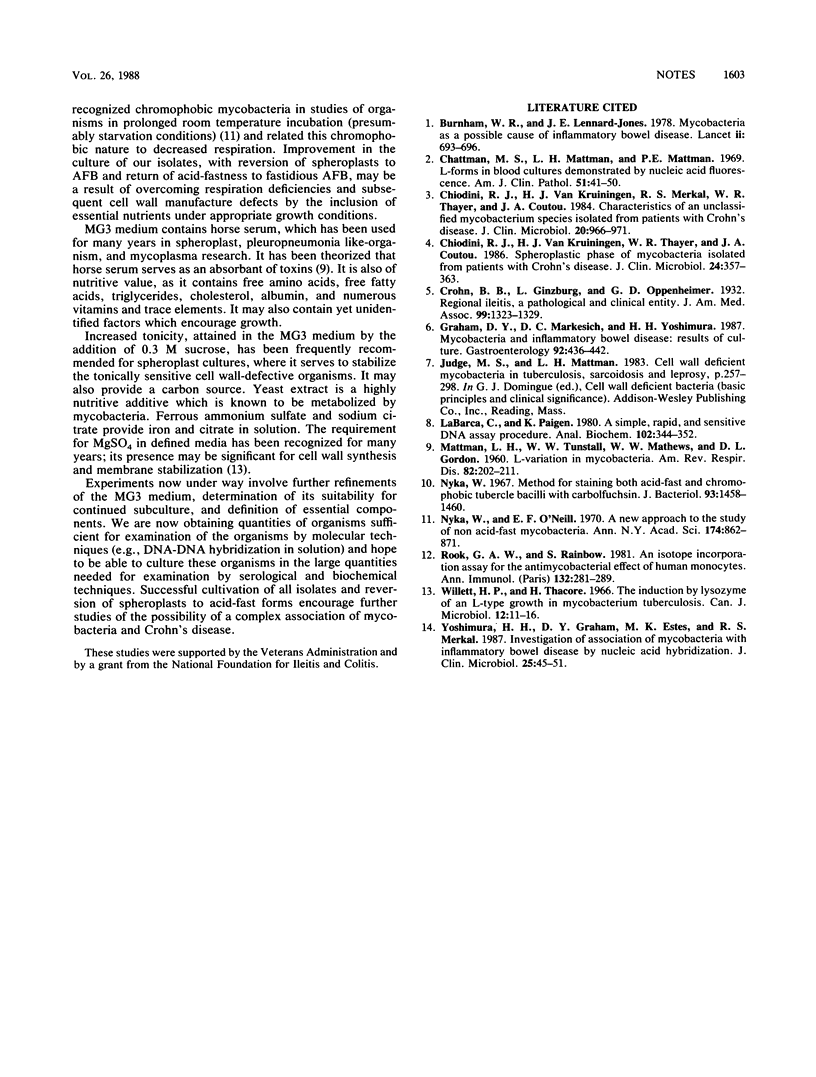
Images in this article
Selected References
These references are in PubMed. This may not be the complete list of references from this article.
- Burnham W. R., Lennard-Jones J. E., Stanford J. L., Bird R. G. Mycobacteria as a possible cause of inflammatory bowel disease. Lancet. 1978 Sep 30;2(8092 Pt 1):693–696. doi: 10.1016/s0140-6736(78)92699-5. [DOI] [PubMed] [Google Scholar]
- Chattman M. S., Mattman L. H., Mattman P. E. L forms in blood cultures demonstrated by nucleic acid fluorescence. Am J Clin Pathol. 1969 Jan;51(1):41–50. doi: 10.1093/ajcp/51.1.41. [DOI] [PubMed] [Google Scholar]
- Chiodini R. J., Van Kruiningen H. J., Merkal R. S., Thayer W. R., Jr, Coutu J. A. Characteristics of an unclassified Mycobacterium species isolated from patients with Crohn's disease. J Clin Microbiol. 1984 Nov;20(5):966–971. doi: 10.1128/jcm.20.5.966-971.1984. [DOI] [PMC free article] [PubMed] [Google Scholar]
- Chiodini R. J., Van Kruiningen H. J., Thayer W. R., Coutu J. A. Spheroplastic phase of mycobacteria isolated from patients with Crohn's disease. J Clin Microbiol. 1986 Sep;24(3):357–363. doi: 10.1128/jcm.24.3.357-363.1986. [DOI] [PMC free article] [PubMed] [Google Scholar]
- Graham D. Y., Markesich D. C., Yoshimura H. H. Mycobacteria and inflammatory bowel disease. Results of culture. Gastroenterology. 1987 Feb;92(2):436–442. doi: 10.1016/0016-5085(87)90139-9. [DOI] [PubMed] [Google Scholar]
- Labarca C., Paigen K. A simple, rapid, and sensitive DNA assay procedure. Anal Biochem. 1980 Mar 1;102(2):344–352. doi: 10.1016/0003-2697(80)90165-7. [DOI] [PubMed] [Google Scholar]
- Nyka W. Method for staining both acid-fast and chromophobic tubercle bacilli with carbolfuschsin. J Bacteriol. 1967 Apr;93(4):1458–1460. doi: 10.1128/jb.93.4.1458-1460.1967. [DOI] [PMC free article] [PubMed] [Google Scholar]
- Nyka W., O'Neill E. F. A new approach to the study of non-acid-fast mycobacteria. Ann N Y Acad Sci. 1970 Oct 30;174(2):862–871. doi: 10.1111/j.1749-6632.1970.tb45605.x. [DOI] [PubMed] [Google Scholar]
- Willett H. P., Thacore H. The induction by lysozyme of an L-type growth in Mycobacterium tuberculosis. Can J Microbiol. 1966 Feb;12(1):11–16. doi: 10.1139/m66-003. [DOI] [PubMed] [Google Scholar]
- Yoshimura H. H., Graham D. Y., Estes M. K., Merkal R. S. Investigation of association of mycobacteria with inflammatory bowel disease by nucleic acid hybridization. J Clin Microbiol. 1987 Jan;25(1):45–51. doi: 10.1128/jcm.25.1.45-51.1987. [DOI] [PMC free article] [PubMed] [Google Scholar]



